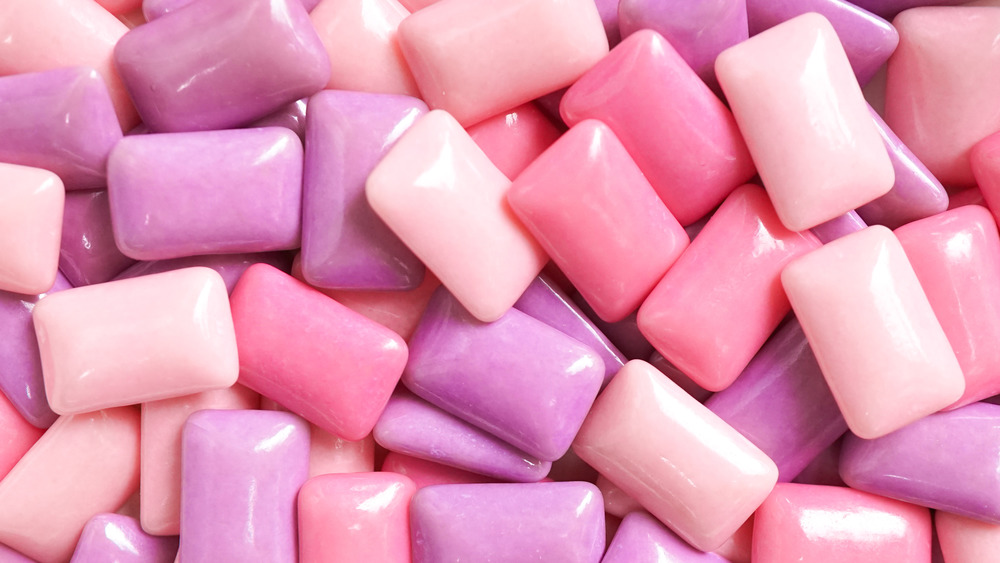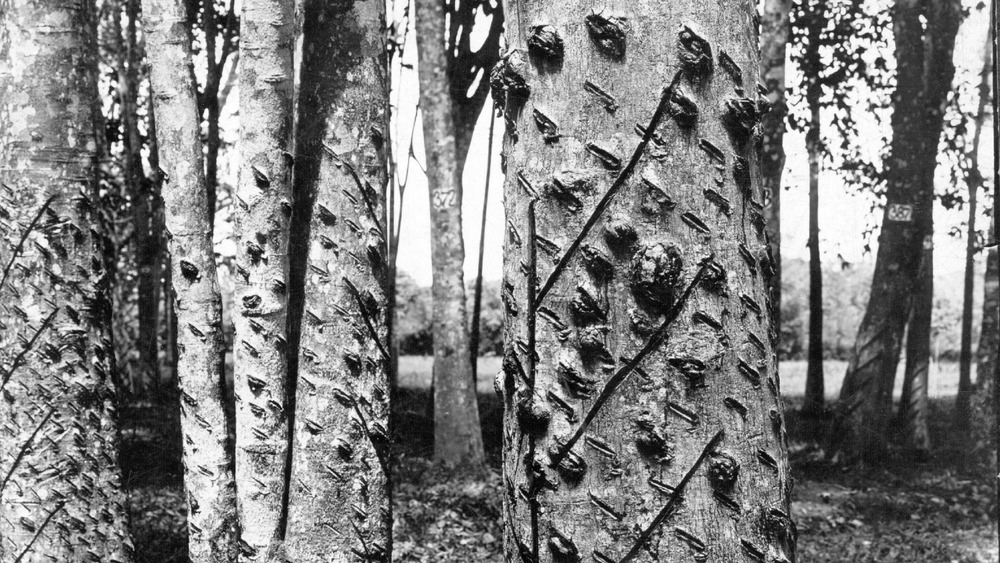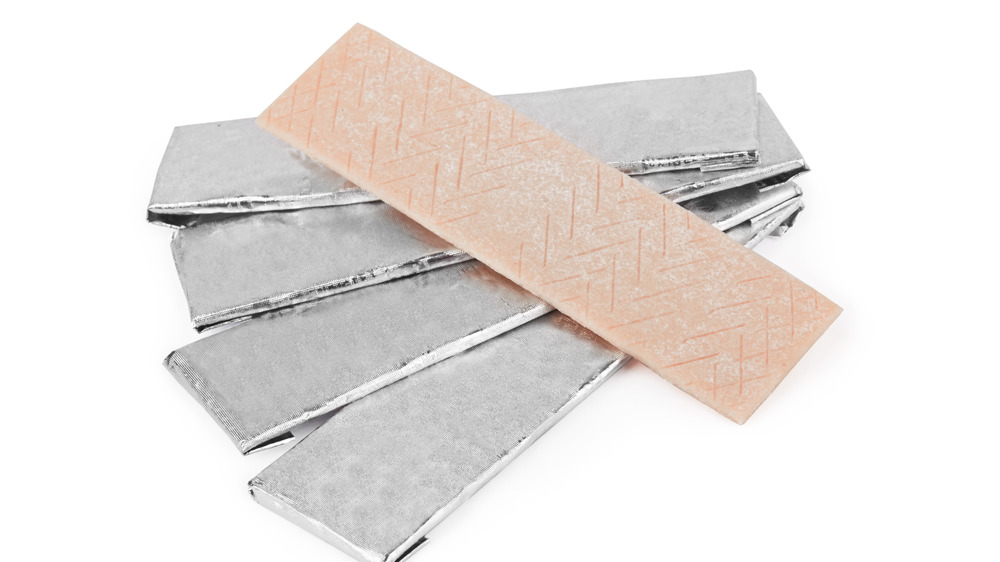The Original Purpose Of Chewing Gum Might Surprise You
Chewing gum is such a common practice that few people think much about it. You can purchase gum in a variety of flavors from almost any kiosk or checkout line. As Select Health reports, chewing gum has been shown to have some health benefits, like improving memory, reducing stress, and aiding in weight loss. But few of us think much about it beyond the stick's ability to provide fresh breath.
There's a long history attached to gum and why humans like to chew it. According to History, people have been chewing gum (or something like it) for around 9,000 years. Most modern gum is made up of gum base, rubber, softeners, and, of course, sweeteners, per Chewing Gum Facts. Up until as recently as World War II, gum manufacturers would make their product from the extract of tree bark.
According to Serious Eats, sapodilla trees, which are native to the rain forests of Central America and southern Mexico, secrete a type of natural latex when their bark is sliced. This substance, called chicle, would be collected in pots, dried, and then enjoyed. Workers called chicleros would collect the substance and ship it to gum companies up north, where it would be distributed to their waiting customers
Early chewing gum was derived from trees
Thousands of years ago, the Mayans and the Aztecs also couldn't get enough of chicle. They used it occasionally for medical purposes, like relieving thirst, easing toothaches, and even, given the absence of floss, getting food out of teeth. But mostly they chewed gum for the same reason people today chew it: They just liked the experience of chewing gum.
Ancient civilizations had much stricter rules surrounding its social acceptability than we do today. While kids today may not be allowed to chew gum in class, most Aztecs were not able to chew gum in public at all, unless they were small children or old women. "Men who chewed chicle were seen as effeminate, while younger women who indulged were assumed to be prostitutes. Anyone of adult age who chewed it was considered totally vulgar," historian, author, and associate professor of anthropology Jennifer Mathews explained to Serious Eats.
Commercial gum manufacturing took off in the 19th century
In North America, Native Americans and early settlers got a similar fix chewing the resin of spruce tree, although spruce resin was more brittle and bitter than chicle. By the 19th century, the first gum companies began popping up in America. In 1848, John B. Curtis became the first commercial gum manufacturer in New England, selling the very popular Maine Pure Spruce Gum. He remained the unchallenged champion of gum distribution until the 1870s, when an unlikely partnership led to the creation of his biggest rival.
By the 1870s, the former 11-time president of Mexico, General Antonio López de Santa Anna (yes, he who won at the Alamo), had been exiled to Staten Island, but he wasn't willing to give up his quest for power. He met up with the New Jersey-based inventor, Thomas Adams, and the two devised a scheme to get rich by manufacturing a rubber substitute from vulcanized chicle. Although the rubber substitute turned out to be a bust, Adams realized boiling, drying, and turning the chicle into sticks of gum would be a much more profitable industry.
Soon, various gum manufacturers were engaged in fierce competition with each other, which led to the invention of the many varieties, flavors, and shapes of chewing gum we have today, easily available for purchase at the checkout of our favorite grocery store, for bubble-blowing or otherwise — no tree maiming required.


